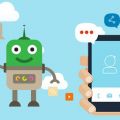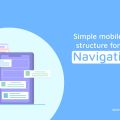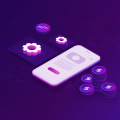How Chatbot development is changing the user experience for the better

Mobile applications have been increasing for the last few years, and their power has advanced in ways the common man couldn’t have imagined. But the trend is now shifting to a new form of technology known as chatbots. With chatbots, the world is rapidly migrating from graphical user interface to conversational user interface. Chatbots are completely changing the way we interact with applications; we can chat or talk to them as friends.
Apps Vs. Chatbots
The major difference between a mobile application and a chatbot is the user interface (UI). A chatbot is a type of a conversational user experience (UX) that is set to affect our lives prominently. Chatbots use simple UX models to provide solutions to different day-to-day tasks. A chatbot development represents an interactive service that provides a conversional experience. The innovation of chatbots is one of the latest evolution points in the world of technology.
There is a high likelihood that chatbot development will be replacing mobile applications in the near future. The ability to understand the use and give an instant response or perform the appropriate action by request makes chatbot development the next big thing in mobile technology. The conversational interface that is chatbots is designed to mimic real-world human conversation; it’s more human, meaning that users will be able to identify with it resulting in better customer experience quickly.
Chatbots Are Changing UX/UI
Chatbot development has really changed UX and UI as we originally knew them. When you compare the UI and UX designs of other applications to that of chatbots, you will see massive differences. Chatbots can interact with the user like a real person and are simplified but have a given level of artificial intelligence in them. That is why they are able to interact with people. That way, businesses can improve their services and build trustworthy relationships with their customers.
Works Naturally
The major purpose of a UX is to make chatbots work in a natural manner. Chatbots must interact like real humans but need to be always ready to help, and they should be a bit smarter than humans. That’s the ideal situation, but we are not there yet.
However, chatbot development will keep evolving, and with advancement in Artificial Intelligence, they should be able to work naturally in the near future. In mobile app development, developers must think of ways of accommodating chatbot technology in their applications as well as other software development efforts. It’s the future of UI.
Offers Options, Tips, and Suggestions
Many users start conversations with chatbots but don’t really know what to say. If these users are left on their own, confusion takes over. Chatbots, through artificial intelligence, give users options, tips, and suggestions on what you may be needing assistance with. This helps with keeping the conversation going on without any form of confusion and, in turn, improves the user experience.
Personalization
When offering customer service, chatbot development provide a high degree of personalization. Chatbots are AIs and are designed to learn from every experience enabling them to offer solutions that focus on each individual. Chatbots are able to use the customer’s specific needs and taste to create unique user experiences for each person.
24/7 Availability
The habits of the consumer have changed. The modern consumer doesn’t expect his/her shopping hours to be restricted to certain times. We want immediate responses 24 hours, seven days a week. The consumer just wants you to be there, and chatbots have really made that easy. Anytime a customer feels like he/she needs some sort of clarification, they can always engage the chatbot development no matter what time of the day it is, which really improves customer service.
Mean Stack Developers | Hire Top Mobile App Developers
Other articles and publications:
Articles and publications of other companies:
- +1 (732) 588-7500
- 315 W 36th Street
- www.otssolutions.com/













